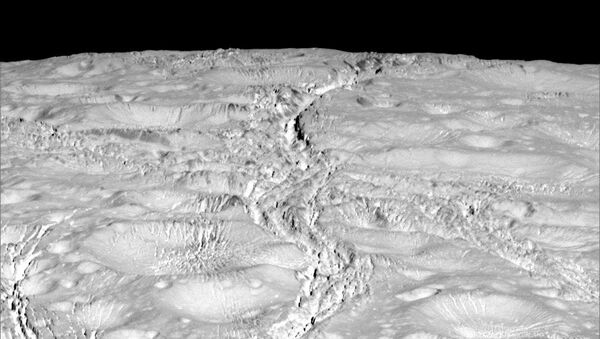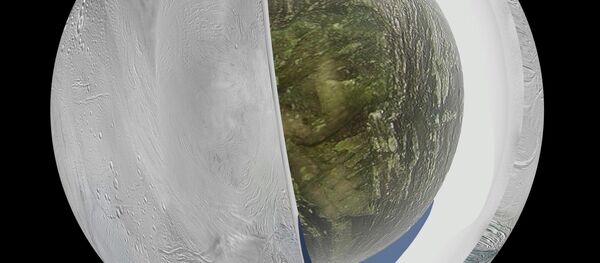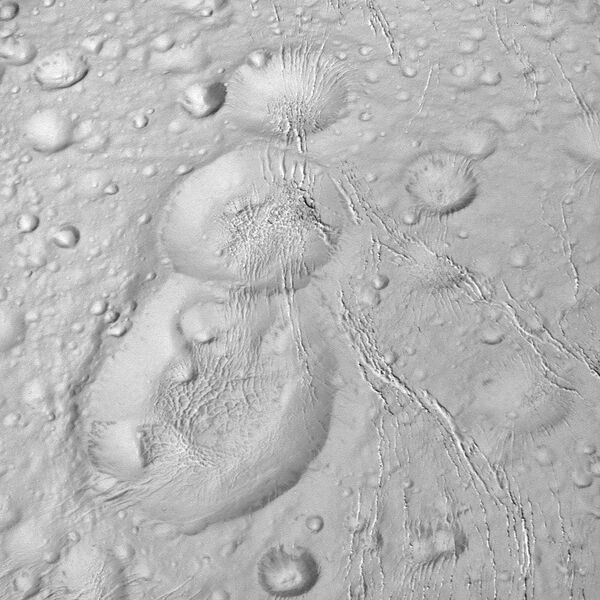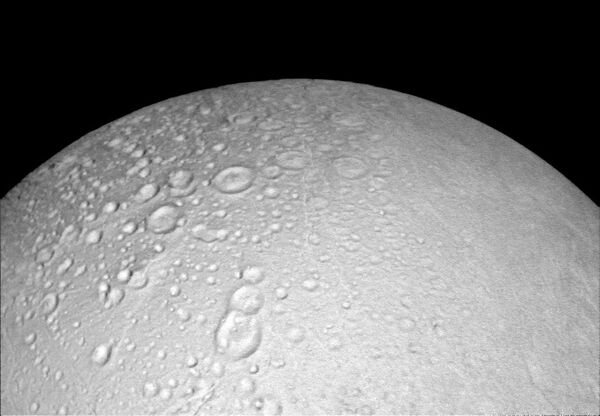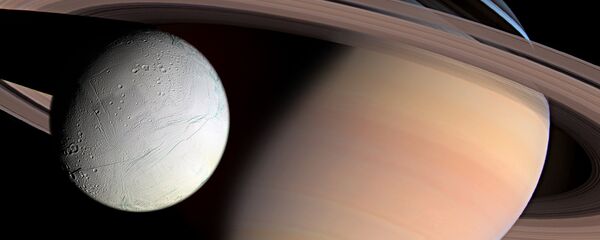Cassini came within 1142 miles of the Enceladean surface Wednesday on its 20th flyby of the moon since it began to orbit Saturn in 2004.
The most recent images sent back were captured during the Enceladean summer in the Northern hemisphere, showing heretofore unknown moonscapes of the moon’s northern polar regions.
“The northern regions are crisscrossed by a spidery network of gossamer-thin cracks that slice through the craters,” said Cornell University’s Paul Helfenstein, a member of the Cassini imaging team. “These thin cracks are ubiquitous on Enceladus, and now we see that they extend across the northern terrains as well.”
Wednesday’s flyby is a prologue to the next close encounter: on October 28th, Cassini will come within 30 miles of Enceladus’s south pole. The satellite is set to dive through a plume of icy spray to sample the chemistry of the subterranean ocean shooting up out of large geysers.
"Mission scientists are hopeful data from that flyby will provide evidence of how much hydrothermal activity is occurring in the moon's ocean, along with more detailed insights about the ocean's chemistry — both of which relate to the potential habitability of Enceladus," a statement from NASA statement reads.
Earlier this year, researchers announced the chemical makeup of the subsurface water on Enceladus — and a process called serpentization, in which metallic rocks are transformed into other minerals when they come in contact with water — could make Enceladus one of the Solar System’s best bets for hosting extraterrestrial life.
"Molecular hydrogen can both drive the formation of organic compounds like amino acids that may lead to the origin of life, and serve as food for microbial life such as methane-producing organisms," Christopher Glein, of the Carnegie Institution for Science in Washington, said in a statement in May.
"As such, serpentinization provides a link between geological processes and biological processes," he added. "The discovery of serpentinization makes Enceladus an even more promising candidate for a separate genesis of life."
Cassini will also fly by Enceladus on December 19, when it will come within 3,106 miles of the moon to gauge how much heat is coming from the satellite’s interior. The generated heat comes from friction, primarily the result of tides from Saturn’s powerful gravitational pull.

